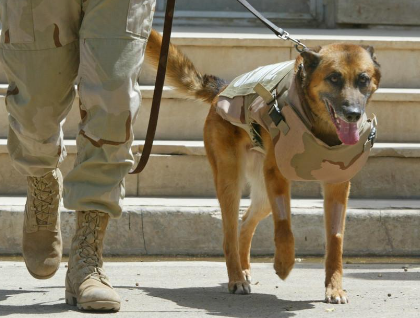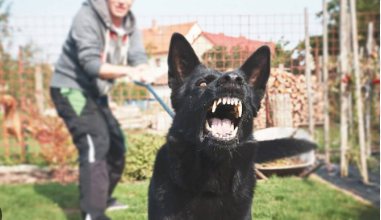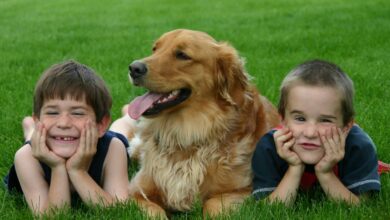From Pups to Protectors: The Making of Army Dogs

Military or Army dogs have been used in various roles throughout history. By providing proper training they will grow into explosives detection dogs. These highly trained dogs are crucial in ensuring the safety and security of soldiers on the battlefield. But what does it take to turn a playful pup into a fierce protector? Let’s take a look at the making of trained dogs.
Playful Pup into a Protector: Army dog training
Selecting Right Breed
The first step in creating an Army dog is selecting the right breed. German Shepherds, Belgian Malinois, and Labrador Retrievers are the most commonly used breeds in the military due to their intelligence, agility, and loyalty. These breeds are also known for their ability to work in challenging environments and adapt to different tasks.
Training Process
Once the breed is selected, the Army dog training process begins. The training process starts as early as 8-12 weeks old when the puppies are tested for their aptitude and willingness to learn. The puppies that pass the tests are then put through a rigorous training program, which can take up to 18 months to complete.
Extensive Socialization Training
In addition to physical training, the dogs also undergo extensive socialization training to help them adapt to working in a military environment. They are exposed to different people, animals, and environments to help them develop a calm and confident demeanor and reduce the risk of aggression.
Teach Basic Commands
During this training period, the puppies are taught basic obedience, socialization, and how to follow commands from their handlers. They also undergo specialized training depending on their future roles, such as tracking, searching, and detecting explosives.
Creating a Bond between Dog and Handler
One of the most important aspects of Army dog training is the bond between the dog and its handler. The dogs are taught to rely on their handlers and to work closely with them. The handlers, in turn, are taught to read the dogs’ body language and understand their needs, creating a strong and symbiotic relationship between the two.
Prepare for Battlefield
The dogs are also exposed to various simulated combat scenarios, such as gunfire, explosions, and other loud noises, to prepare them for the stressful and chaotic environment of the battlefield.
Selection and Evaluation
Upon completion of their training, the dogs are deployed to various locations around the world. They serve alongside their handlers and other soldiers, performing vital roles such as detecting explosives, searching for missing soldiers, and patrolling areas for potential threats.
Teach them Tracking
Dogs employ physiological methods to track scent trails, however, their techniques vary based on the environment they are navigating. Specifically, a dog’s capacity for scent tracking is influenced by a person’s ability to leave their scent on the ground or in the air. When humans step on the ground, they disturb the soil and release moisture, causing plant life to decay and produce a distinct odor. This creates a ground fragrance that can be picked up by a dog’s heightened sense of smell. Each footprint emits a fresh scent that is more pronounced than the surrounding vegetation. Due to their exceptional sense of smell, dogs can detect both airborne and ground-based scents when tracking. Therefore, when a dog is deployed to a crime scene, it will follow a particular trail using its olfactory senses
Final Words
In conclusion, the process of creating an Army dog is a long and intense journey. These highly trained canines go from playful pups to fierce protectors through a combination of specialized training, socialization, and bonding with their handlers. They play a critical role in ensuring the safety and security of soldiers on the battlefield and are an integral part of the military’s operations.




